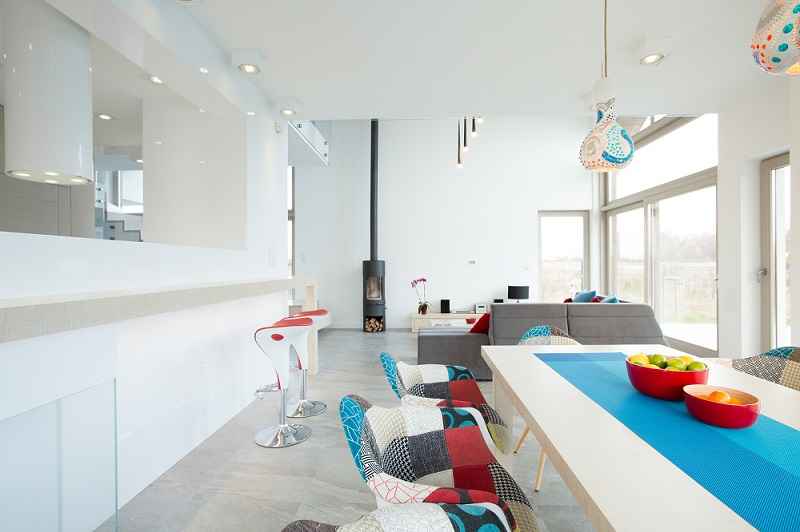What does a Lighting Designer do?
A Lighting Designer is a specialized professional who creates innovative lighting solutions to enhance the aesthetic appeal, functionality, and atmosphere of interior and exterior spaces. Lighting designers collaborate with architects, interior designers, and project stakeholders to integrate lighting design concepts into architectural, commercial, residential, and entertainment projects.
The primary responsibilities of a Lighting Designer include:
- Concept Development: Collaborating with architects, interior designers, and clients to develop conceptual lighting design ideas and concepts that align with the project’s vision, objectives, and design intent. Lighting designers analyze project requirements, user needs, and spatial characteristics to develop creative lighting solutions that enhance visual comfort, functionality, and ambiance.
- Lighting Design Planning: Creating lighting design plans, layouts, and specifications detailing the placement, type, and characteristics of lighting fixtures, luminaires, and control systems. Lighting designers consider factors such as task requirements, architectural features, color rendering, and energy efficiency to develop comprehensive lighting schemes that optimize visual performance and spatial perception.
- Fixture Selection and Specification: Selecting appropriate lighting fixtures, lamps, and lighting controls based on project requirements, design aesthetics, and technical specifications. Lighting designers evaluate fixture performance, photometric data, and lighting distribution to ensure compatibility with project goals, budget constraints, and lighting quality standards.
- Daylighting Analysis: Conducting daylighting analysis and simulations to optimize natural light penetration, daylight harvesting, and daylight integration strategies in building designs. Lighting designers use computational tools and daylight modeling software to assess daylight availability, glare potential, and solar heat gain to optimize energy performance and occupant comfort.
- Visual Environment Design: Designing visual environments that enhance spatial perception, wayfinding, and architectural features through strategic lighting design interventions. Lighting designers employ techniques such as accent lighting, focal point illumination, and shadow play to create dynamic visual compositions that evoke mood, emotion, and visual interest.
Overall, a Lighting Designer plays a crucial role in shaping the visual identity, functionality, and user experience of architectural spaces, interior environments, and outdoor landscapes through innovative lighting design solutions.
How to become a Lighting Designer
Becoming a Lighting Designer requires a combination of education, experience, and creative design skills in lighting technology, architectural aesthetics, and visual communication. Here’s a simplified guide on how to pursue a career as a lighting designer:
- Education: Obtain a bachelor’s degree in lighting design, architectural lighting, interior design, or a related field from an accredited university or college. Coursework typically covers lighting fundamentals, luminaire design, visual perception, and lighting technology.
- Specialized Training: Pursue specialized training and certification programs in lighting design, such as the Lighting Certified (LC) credential offered by the National Council on Qualifications for the Lighting Professions (NCQLP) or the Certified Lighting Designer (CLD) designation offered by the International Association of Lighting Designers (IALD). Certification programs demonstrate expertise in lighting design principles, codes, and practices.
- Internships and Work Experience: Gain practical experience through internships, co-op programs, or entry-level positions with lighting design firms, architectural practices, or lighting manufacturers. Internship opportunities provide hands-on experience in lighting design projects, luminaire selection, and lighting calculations under the guidance of experienced lighting designers.
- Technical Skills Development: Develop technical skills in lighting design software, photometric analysis tools, and computer-aided design (CAD) software commonly used in the industry. Familiarize yourself with lighting standards, such as the Illuminating Engineering Society (IES) Lighting Handbook, and lighting design best practices to create innovative lighting solutions.
- Creative Design Portfolio: Build a portfolio showcasing your lighting design projects, conceptual sketches, renderings, and visualizations to demonstrate your design skills and creative vision to potential employers and clients. Your portfolio should highlight diverse lighting design projects, including residential, commercial, hospitality, and outdoor environments.
By following these steps and gaining the necessary education, experience, and creative design skills, you can pursue a rewarding career as a Lighting Designer and contribute to creating visually compelling, functional, and sustainable lighting environments for architectural projects and built environments.
Lighting Designer salary
The salary of a Lighting Designer can vary depending on factors such as experience, location, employer, industry sector, and level of education and certification. On average, lighting designers earn competitive salaries commensurate with their skills, expertise, and role within the design profession.
In the United States, the median annual salary for a Lighting Designer is approximately $65,000. However, salaries can range from $45,000 to over $100,000 or more, depending on factors such as geographic location, years of experience, project complexity, and employer size.
Where does a Lighting Designer work?
A Lighting Designer can work in various industries and settings where lighting design plays a crucial role in enhancing visual environments, architectural spaces, and experiences. Some common employment sectors for lighting designers include:
- Architectural Firms: Lighting designers may work for architectural firms specializing in building design, urban planning, and landscape architecture. They collaborate with architects and project teams to integrate lighting design concepts into architectural projects, including residential, commercial, institutional, and public spaces.
- Interior Design Studios: Lighting designers may work for interior design studios or design consultancy firms focused on interior environments, retail spaces, hospitality venues, and workplace design. They contribute to creating lighting schemes that enhance spatial perception, ambiance, and user experience in interior settings.
- Lighting Design Consultancies: Lighting designers may work for lighting design consultancies or specialized lighting design firms dedicated to providing lighting design services across diverse sectors, including hospitality, retail, entertainment, and cultural institutions. They specialize in creating customized lighting solutions tailored to client needs and project requirements.
- Engineering Companies: Lighting designers may work for engineering companies or multidisciplinary design firms offering integrated design services, including mechanical, electrical, and plumbing (MEP) engineering. They collaborate with engineers and technical specialists to incorporate lighting design into building systems and infrastructure projects.
Lighting Manufacturers: Lighting designers may work for lighting manufacturers or luminaire manufacturers involved in designing, manufacturing, and marketing lighting products and fixtures. They contribute to product development, luminaire design, and application support to meet market demand and customer requirements.


